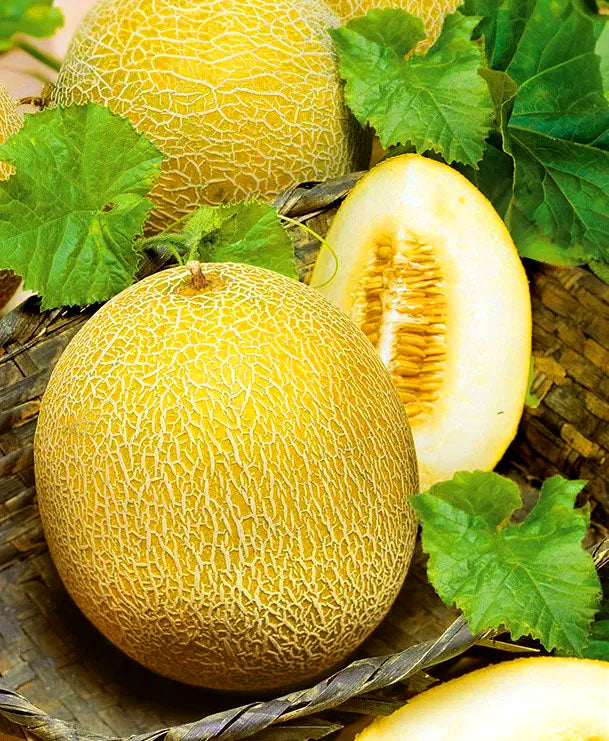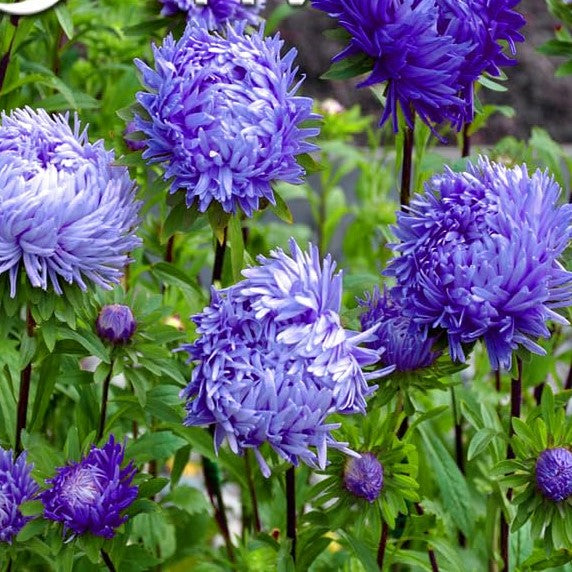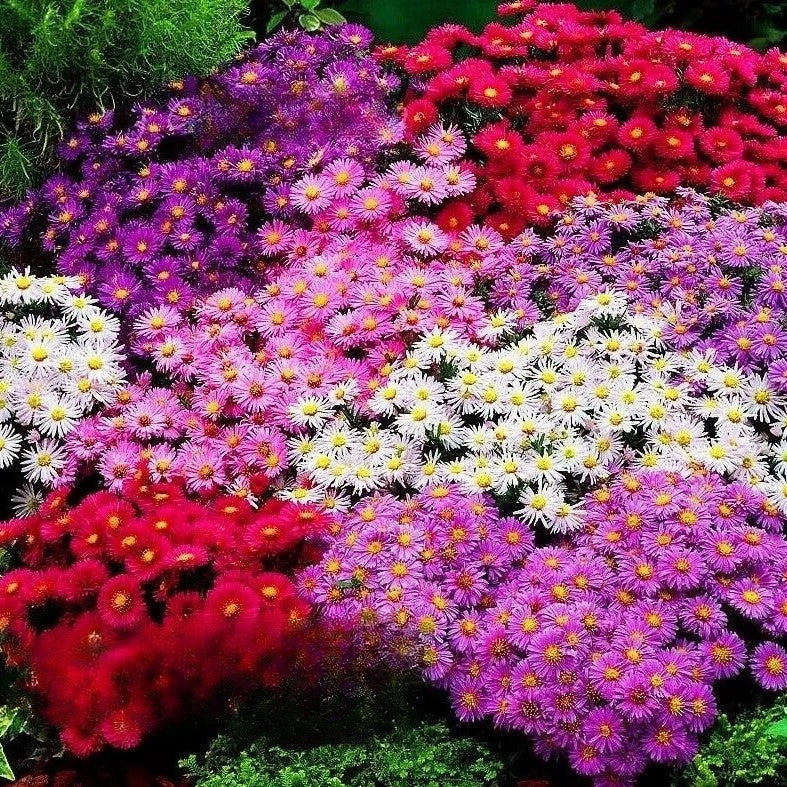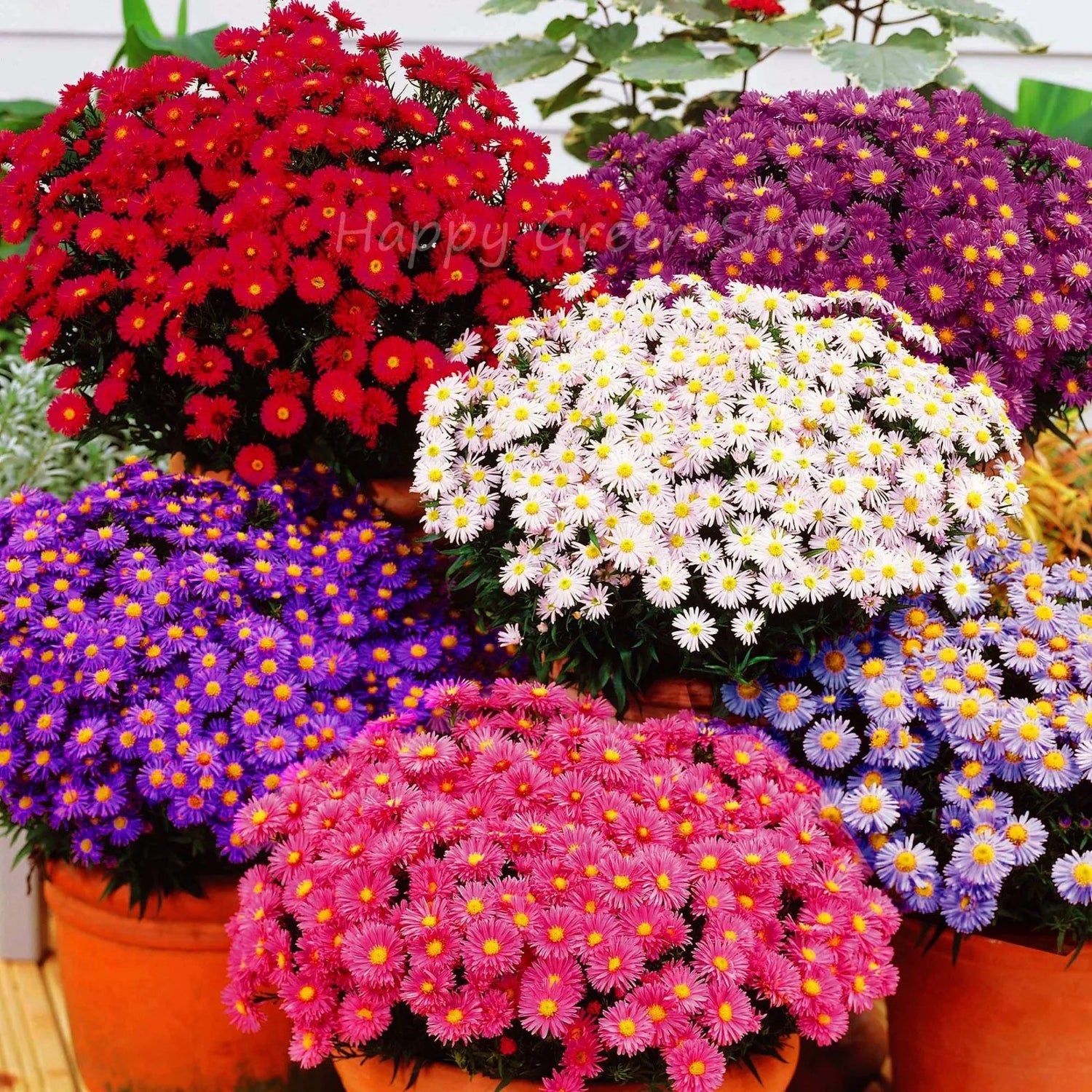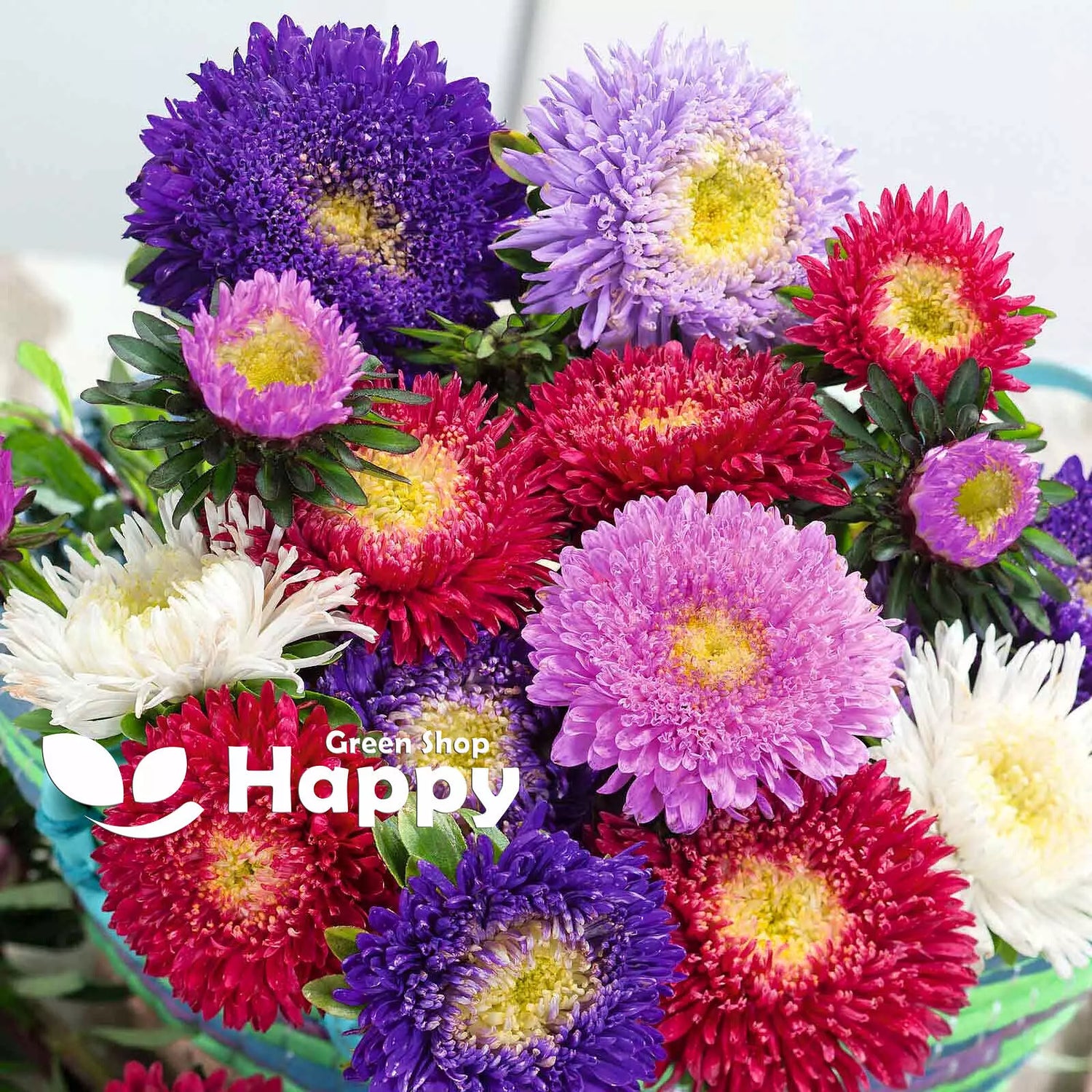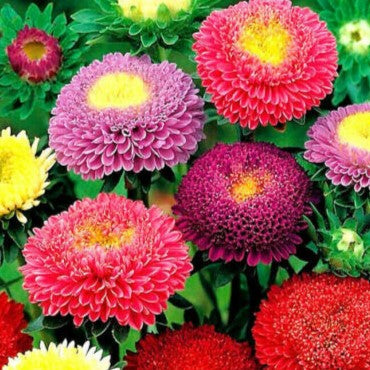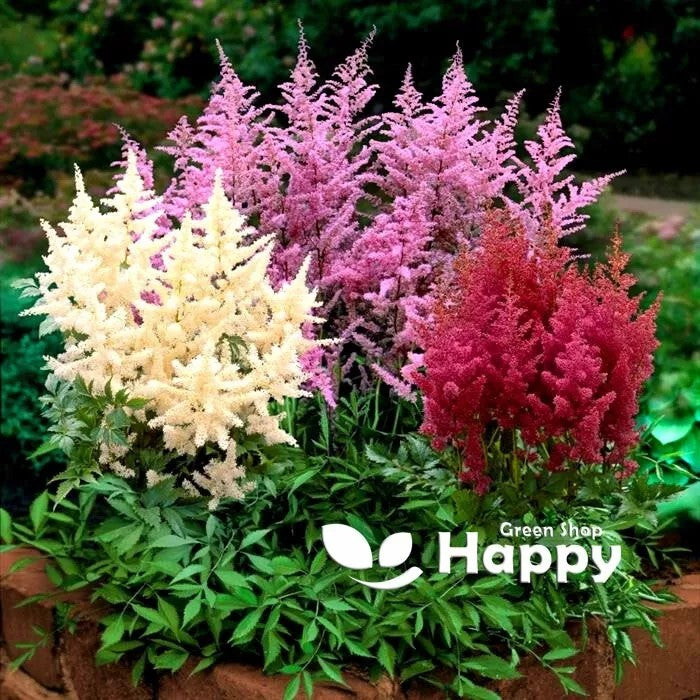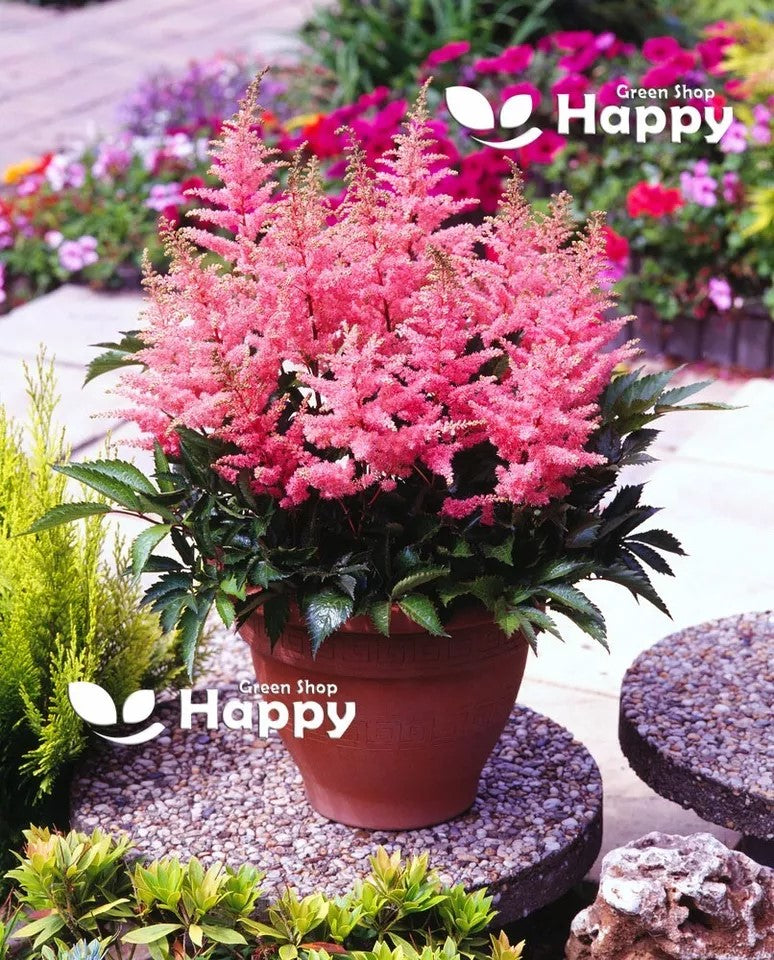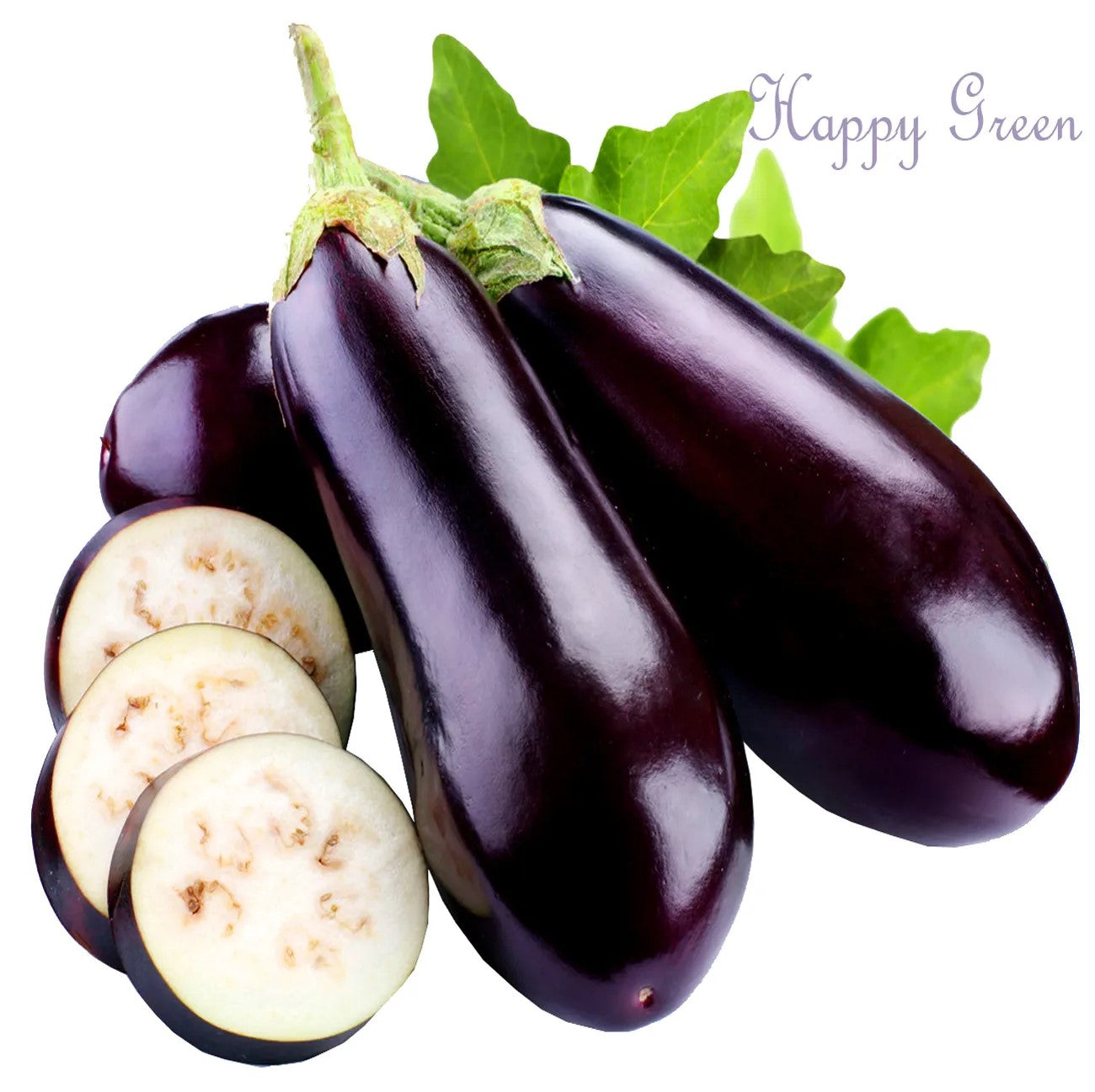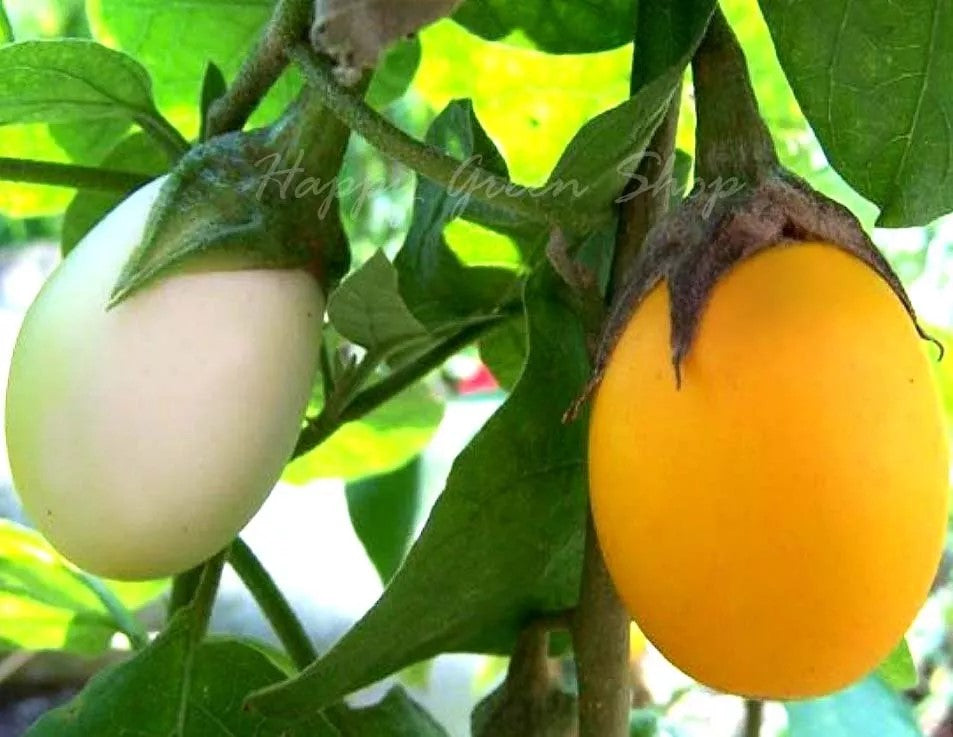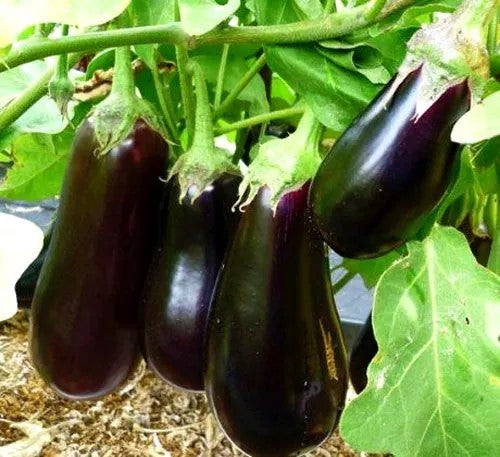Sort by:
1113 products
1113 products
Aster ‘Pavlova’ Deep Blue – Seeds
(Callistephus chinensis)
Aster ‘Pavlova’ Deep Blue produces large, fully double, deep blue flowers that brighten borders and bouquets. Compact and long-flowering, it attracts pollinators and is easy to grow.
Why Grow Aster ‘Pavlova’ Deep Blue?
-
Large, double deep blue blooms
-
Long-flowering annual
-
Attracts bees and butterflies
-
Perfect for borders and cut flowers
Key Features
-
Type: Annual
-
Height: 40–60 cm
-
Flowers: Summer to autumn
-
Position: Full sun
-
Soil: Well-drained, moderately fertile
Ideal For
-
Borders, cottage gardens, and flower beds
-
Pollinator-friendly gardens
-
Cut flowers and bouquets
Sowing & Growing
-
Sow indoors: February–April
-
Sow outdoors: April–May
-
Germination: 10–20 days at 18–20°C
-
Spacing: 25–30 cm
-
Care: Moderate watering; deadhead for continuous blooms
Aster Dwarf ‘Pinocchio’ Mixed – Bright, Bushy, and Long-Flowering
-
Aster Dwarf ‘Pinocchio’ Mixed offers a cheerful display of compact, bushy plants covered in semi-double blooms in shades of pink, red, violet, and white. These easy-to-grow annuals provide long-lasting color from summer into autumn, making them ideal for borders, pots, and cutting.
What Makes It Special
-
Charming mix of bright, semi-double blooms
-
Compact plants perfect for small gardens and containers
-
Long flowering season until the first frost
-
Excellent for cutting and fresh arrangements
-
Low-maintenance and rewarding for all gardeners
Key Features
-
Height: 20–25 cm – neat, compact habit
-
Flowers in a wide range of vibrant colors
-
Works well in formal and informal displays
-
Attracts pollinators and beneficial insects
-
Great choice for beginners
Ideal For
-
Bedding and border edging
-
Patio pots, window boxes, and containers
-
Cottage gardens and mixed displays
-
Fresh cut flowers for the home
Sowing
-
Sow indoors 6–8 weeks before last frost or direct sow after frost danger has passed
-
Plant seeds 0.5 cm deep in well-drained soil at 16–20°C
-
Germination: 7–14 days
-
Space plants 20–25 cm apart
-
Prefers full sun and moderate watering
-
Aster Powder Puff Seeds (Callistephus chinensis)
Aster Powder Puff is a stunning annual variety producing large, fluffy, chrysanthemum-like blooms in a wide range of vibrant colors. Its double flowers resemble soft powder puffs, adding texture and richness to summer and autumn borders. Easy to grow and long-lasting as cut flowers, they make an excellent addition to cottage gardens and floral displays.
What Makes It Special
-
Large, fully double “powder puff” blooms
-
Available in a wide range of bright, cheerful colors
-
Excellent as a cut flower with a long vase life
-
Strong stems and bushy growth habit
Key Features
-
Botanical name: Callistephus chinensis
-
Variety: Powder Puff
-
Seed count: Approx. seeds per pack
-
Height/Spread: 50–70 cm tall, 25–30 cm spread
-
Position: Full sun or partial shade; fertile, well-drained soil
-
Flowering period: July–October
Ideal For
-
Borders and bedding displays
-
Cutting for floral arrangements
-
Cottage gardens and mixed borders
-
Late-summer color in the garden
Sowing Instructions
-
When to sow: February–April indoors, or direct sow outdoors from April–May
-
How to sow:
-
Sow thinly on moist seed compost, cover lightly with soil or vermiculite
-
Germination takes 7–14 days at 18–20°C
-
-
Transplanting: When seedlings are large enough, transplant 30 cm apart
-
Care: Water regularly, avoid overhead watering to prevent mildew
Aster Tall Pompon Montezuma Mixed – 100 Seeds (Callistephus chinensis)
Aster Tall Pompon Montezuma Mixed (Callistephus chinensis) is a charming annual producing dense, pompon-shaped flowers in a mix of vibrant colors. Perfect for borders, cottage gardens, and cutting gardens, its tall, upright stems create eye-catching vertical displays. Easy to grow and long-flowering, it attracts pollinators and adds a cheerful splash of color from summer to autumn.
Why Grow "Montezuma Mixed"
-
Dense, pompon-shaped flowers in assorted bright colors
-
Tall, upright stems ideal for vertical interest
-
Long flowering season from summer to autumn
-
Attracts bees, butterflies, and other pollinators
Key Features
-
Type: Annual (Callistephus chinensis)
-
Height: 60–90 cm
-
Flowering: July–October
-
Position: Full sun
-
Uses: Borders, cottage gardens, cutting gardens, pollinator-friendly planting
Ideal For
-
Tall border displays
-
Cottage-style gardens
-
Cutting gardens for bouquets
-
Pollinator-friendly planting
Sowing & Growing
-
Sow indoors: February–April in seed trays or pots
-
Sow outdoors: After last frost in prepared soil
-
Germination: 10–14 days at 18–20°C
-
Thin seedlings to 25–30 cm apart
-
Prefers full sun and well-drained soil
-
Stake taller plants if needed
Aster Tall 'Rainbow' Single Mix – 450 Seeds (Callistephus chinensis)
Create a dazzling summer display with Aster Tall 'Rainbow' Single Mix. This vibrant blend produces elegant, daisy-like blooms in a full spectrum of colors. Tall and graceful, these asters make a striking addition to borders and provide long stems ideal for cutting.
Why Grow 'Rainbow' Single Mix
-
Wide range of bright, cheerful colors
-
Tall, upright habit for garden impact
-
Perfect for cut flowers and bouquets
-
Long flowering season
Key Features
-
Type: Half-hardy annual (Callistephus chinensis)
-
Height: 60–80 cm (tall)
-
Flowering: July–October
-
Position: Full sun
-
Uses: Borders, cutting gardens, bouquets
Ideal For
-
Cottage and cutting gardens
-
Summer flower beds and displays
-
Bright floral arrangements
-
Adding height to mixed borders
Sowing & Growing
-
Sow indoors: March–April in trays/pots
-
Transplant outdoors: After last frost
-
Germination: 7–14 days at 15–20°C
-
Spacing: 25–30 cm apart
-
Deadhead to prolong blooming
Astilbe Flower Mix Seeds (Astilbe arendsii hybrids)
Add lush, feathery color to shaded areas with Astilbe Flower Mix (Astilbe arendsii hybrids). This vibrant mix produces tall, plume-like flowers in shades of pink, red, and white above attractive fern-like foliage. Ideal for borders, woodland gardens, and container planting, Astilbe thrives in moist, shady conditions and attracts pollinators for a lively garden display.
How to Grow
-
Sow seeds indoors in late winter or early spring.
-
Use a fine, well-drained seed compost and lightly press seeds onto the surface (do not cover).
-
Keep soil moist and maintain a temperature of 18–20°C for germination (14–28 days).
-
Transplant seedlings when large enough to handle, spacing 30–40 cm apart.
-
Keep plants evenly watered, especially during dry periods.
-
Mulch around established plants to retain moisture and encourage vigorous growth.
Key Features
-
Feathery, plume-like flowers in pink, red, and white shades
-
Attractive fern-like foliage all season
-
Ideal for shaded or partially shaded areas
-
Long-flowering and pollinator-friendly
-
Perfect for borders, woodland gardens, and containers
Ideal For
-
Shady garden beds and borders
-
Woodland and cottage-style gardens
-
Containers and patio planters in partial shade
-
Attracting bees, butterflies, and other pollinators
Sowing
-
Best time: Late winter to early spring indoors
-
Germination: 14–28 days
-
Sow on soil surface, do not cover
-
Prefers moist, well-drained soil in partial to full shade
Quick Tip
-
Keep soil consistently moist and provide partial shade for optimal growth and abundant flowering.
Aubergine 'Black Beauty' – Seeds (Solanum melongena)
The classic Black Beauty aubergine is a time-honored variety producing large, glossy, deep-purple fruits with tender flesh and rich flavor. Compact and reliable, it’s a favorite for home gardeners and a staple in Mediterranean cuisine. Perfect for grilling, roasting, baking, or adding to curries and stews, this aubergine is as versatile as it is delicious.
How to Grow
-
Sow seeds indoors from January to April in trays or pots.
-
Sow 0.5 cm deep in moist compost, keeping warm at 20–25°C.
-
Transplant seedlings into larger pots when big enough to handle.
-
Harden off and plant out in a greenhouse or sunny, sheltered spot once frosts have passed.
-
Support plants as they grow and keep soil moist.
Key Features
-
Classic heirloom aubergine variety
-
Large, glossy, deep-purple fruits
-
Rich, tender flesh with excellent flavor
-
Reliable and high-yielding
-
Suitable for greenhouses, polytunnels, or warm outdoor sites
Ideal For
-
Mediterranean cooking
-
Roasting, grilling, frying, and stews
-
Greenhouses, polytunnels, or sunny patios
-
Home gardeners seeking a proven classic
Sowing & Harvest
-
Sow: January to April (indoors)
-
Depth: 0.5 cm
-
Transplant spacing: 40–50 cm
-
Harvest: August to October
Quick Tip
-
Pinch out the growing tip when the plant reaches about 30 cm to encourage bushier growth and more fruit.
Aubergine 'Golden Egg' – Seeds (Solanum melongena)
Add a touch of the unusual to your garden with the striking Golden Egg aubergine. This rare and decorative variety produces small, oval fruits that ripen to a stunning golden yellow. Compact and easy to grow, it’s both ornamental and edible, making it a real talking point in any kitchen garden, greenhouse, or patio pot. The tender fruits are perfect for grilling, baking, or adding a unique twist to your favorite dishes.
How to Grow
-
Sow seeds indoors from January to April at 20–25°C.
-
Sow 0.5 cm deep in trays or pots of moist compost.
-
Transplant seedlings into larger pots when strong enough.
-
Harden off and plant into greenhouse borders, grow bags, or sunny sheltered beds after the last frost.
-
Water regularly and support as fruits develop.
Key Features
-
Rare aubergine variety with golden-yellow fruits
-
Compact plants, ideal for pots and greenhouses
-
Edible and ornamental – perfect for display and cooking
-
Easy to grow with good yields
-
Unique centerpiece for kitchen gardens
Ideal For
-
Greenhouses, polytunnels, and sunny patios
-
Decorative planting with edible appeal
-
Grilling, baking, and creative cooking
-
Gardeners looking for something unusual
Sowing & Harvest
-
Sow: January to April (indoors)
-
Depth: 0.5 cm
-
Spacing: 40–50 cm
-
Harvest: August to October
Quick Tip
-
For best results, pick fruits regularly when firm and brightly colored to encourage continuous production.
Aubergine ‘Halflange Violette’ Seeds (Solanum melongena)
Grow flavorful, glossy vegetables with Aubergine ‘Halflange Violette’ (Solanum melongena). This compact variety produces medium-sized, deep purple fruits with tender flesh, perfect for grilling, roasting, or baking. Easy to cultivate in warm climates or greenhouses, it offers a high-yield, homegrown harvest of versatile aubergines.
How to Grow
-
Sow seeds indoors 8–10 weeks before the last frost.
-
Use well-drained, fertile soil in a warm, sunny location.
-
Sow seeds 0.5–1 cm deep and keep soil consistently moist.
-
Maintain a temperature of 22–26°C for optimal germination (10–14 days).
-
Transplant seedlings outdoors or into large containers after all risk of frost has passed, spacing 50–60 cm apart.
-
Water regularly and support plants if necessary.
-
Harvest fruits when fully colored, firm, and glossy.
Key Features
-
Medium-sized, deep purple fruits with tender flesh
-
Compact, high-yield variety
-
Ideal for grilling, roasting, baking, and fresh cooking
-
Easy to grow in warm climates or greenhouses
-
Attractive, glossy vegetables for garden or container planting
Ideal For
-
Vegetable gardens, raised beds, and large containers
-
Grilling, roasting, baking, and culinary use
-
Homegrown, high-yield aubergines
-
Greenhouse cultivation in cooler regions
Sowing
-
Best time: 8–10 weeks before last frost indoors
-
Depth: 0.5–1 cm
-
Spacing: 50–60 cm apart outdoors
-
Prefers full sun, warm conditions, and fertile, well-drained soil
Quick Tip
-
Pinch the growing tips to encourage bushier growth and higher fruit production.
Showing 63/1113




